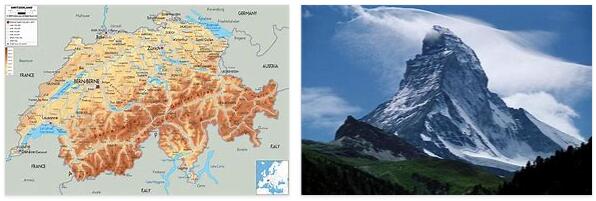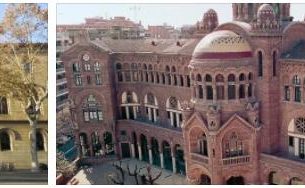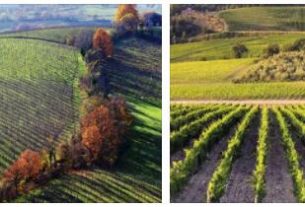Vegetation
Due to the differences in altitude in Switzerland, a distinction is made between several levels of vegetation. The colline level (hilly level, up to about 600 m above sea level) offers good conditions for the agricultural cultivation of grain, fruit and vegetables. Chestnuts, figs, bay trees, almond trees, oranges, lemons and others also grow in protected locations (e.g. in southern Ticino). In the submontane level (mountain forest level, up to about 1,200 m above sea level), mixed deciduous forest is predominant with beech, maple, oak, linden, silver fir and pine. Pasture farming is practiced in forest-free areas. Spruce forests predominate in the montane zone (up to around 1,800 m). The subalpine level closes(up to about 2,200 m above sea level) with spruce, Scots pine and even higher with Swiss stone pine and mountain pine. The alpine level begins above the tree line (up to around 3,000 m above sea level) with smaller groups of trees, and beyond the tree line with mountain pines and bushes as well as numerous grasses. There are also many typical alpine plants such as cyclamen, alpine rose, gentian and edelweiss. In the subsequent nival level, mostly only mushrooms, mosses and lichens are found in snow-free locations. Depending on the amount of sunlight, the vegetation levels can vary considerably; on the south side of the Alps they are around 300 m higher than on the north side.
Wildlife
The animal world in Switzerland comprises around 40,000 species, including 376 vertebrates. In addition to widespread, well-known Central European species such as roe deer, red deer, wild boar, red fox, badger, various marten-like, brown hare and others. the alpine fauna is particularly characteristic. Among the mammals, this includes species such as chamois, marmot and mountain hare. The bird world is characterized by golden eagles, capercaillie, rock ptarmigan, wall creepers, alpine choughs and crows. Among the amphibians, the pure black, live-bearing alpine salamander is particularly striking. The fish populations in rivers and lakes are among others. characterized by brown trout and whitefish. Finally, numerous rare alpine species can also be found among the invertebrates, such as B. Alpenapollo (butterfly) or the alpine buck (beetle).
A Mediterranean influence is evident in southern Switzerland. In addition to numerous other species, this applies to, among others. Occurrence of snakes like yellow-green angry snake and viper snake.
Extensive conservation efforts have led to the reintroduction of several extinct species: from 1911 the Alpine ibex was successfully reintroduced, since 1956 the beaver and since 1971 the lynx, of which there are around 100 adult animals in the northern and central Alps and in the Jura.
Wolves have occasionally re-immigrated on their own since the mid-1990s. Switzerland has been involved in the program for the reintroduction of the bearded or lamb vulture (vulture) in the Alps since 1991. – Switzerland also contributes to genetic diversity by the fact that a particularly large number of old domestic animal breeds can still be found in the Alpine region.
Religion
Freedom of belief and conscience is guaranteed by Article 15 of the Federal Constitution; State-church relationships are based on Article 72 of the Federal Constitution. The state church law is regulated according to cantonal law and is structured differently in the cantons with regard to the individual state church law provisions. The requirement of approval for the establishment of dioceses by the federal government, the so-called “diocesan article” (Article 72 paragraph 3 of the Federal Constitution), introduced into the constitution in 1874, was abolished in 2001.
The Catholic Church, the Evangelical Reformed Cantonal Churches and the Christian Catholic Church of Switzerland (Old Catholics) have public law status; Exceptions are the cantons of Geneva and Neuchâtel, where there has been a formal separation of church and state since 1907 and 1941, and the religious societies can be assigned according to the principle of private law. The six Catholic dioceses are directly subordinate to the Apostolic See; the right to elect a bishop rests with the cathedral chapter in the dioceses of Basel, St. Gallen and Chur (here from a papal proposal of three); the pope’s right of free appointment applies to Lausanne-Geneva-Freiburg, Lugano and Sion. The Principality of Liechtenstein was part of the Swiss diocese of Chur until the establishment of the former Catholic Archdiocese of Vaduz (December 21, 1997).
The Evangelical Reformed cantonal churches have a structure similar to that of the state cantonal organization, with church parliaments and church councils as executive authorities. The Swiss Council of Religions, the representative of the Swiss Evangelical Church Federation (SEK), the Catholic Swiss Bishops’ Conference (SBK), the Christian Catholic Church of Switzerland, the Swiss Israelite has existed since May 2006 as an interreligious platform for discussion at federal level and contact person for religious questions for the federal authorities Association of Municipalities (SIG) and the Federation of Islamic Umbrella Organizations in Switzerland (FIDS).
According to the official religious statistics (mysteryaround), in 2018 35.8% of the permanent resident population aged 15 and over belonged to the Catholic Church, 23.8% to the Protestant-Reformed regional churches and 7.4% to other Christian denominations (including Protestant free churches, especially Pentecostals and neo-pietist communities as well as various Eastern churches).
5.3% of the population aged 15 and over were Muslims in 2018. There is a mosque in Geneva and several Islamic centers.
The Jewish community members make up 0.2% of the population; The Jewish umbrella organization is the Swiss Association of Israelites (founded in 1904; seat: Zurich). The history of the Jewish community in Switzerland (Basel is attested to as the oldest Jewish community [1213]) is documented in the “Jewish Museum of Switzerland” in Basel.
Of the numerous smaller religious special and ideological communities represented, the New Apostolic Church, the Jehovah’s Witnesses and the Mormons (in Zollikofen the oldest Mormon temple in Europe [inaugurated 1955]) as well as the General Anthroposophical Society, which has its headquarters in Dornach (Goetheanum), are particularly noteworthy.
26.3% of the population aged 15 and over were non-denominational in 2018.



